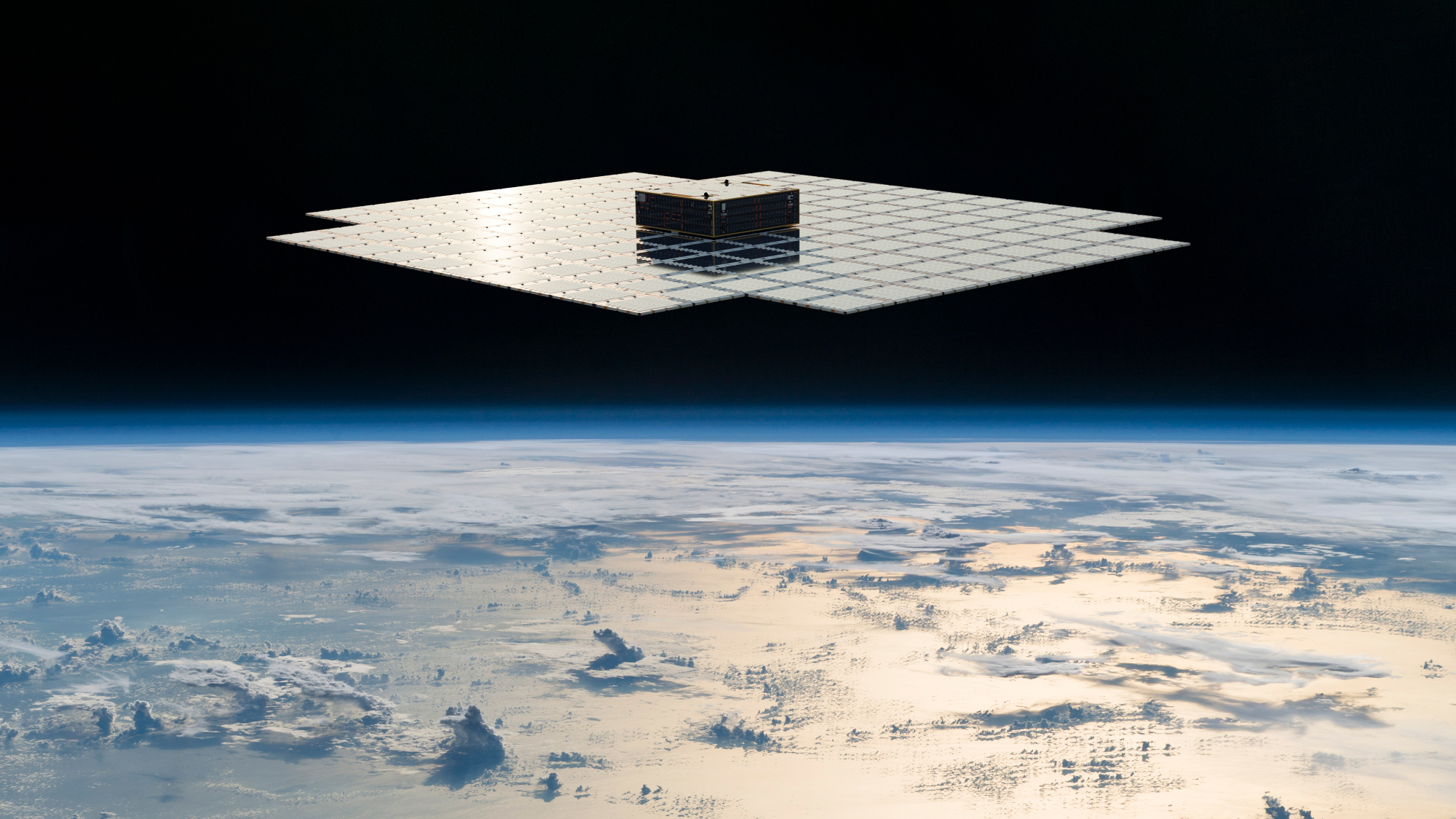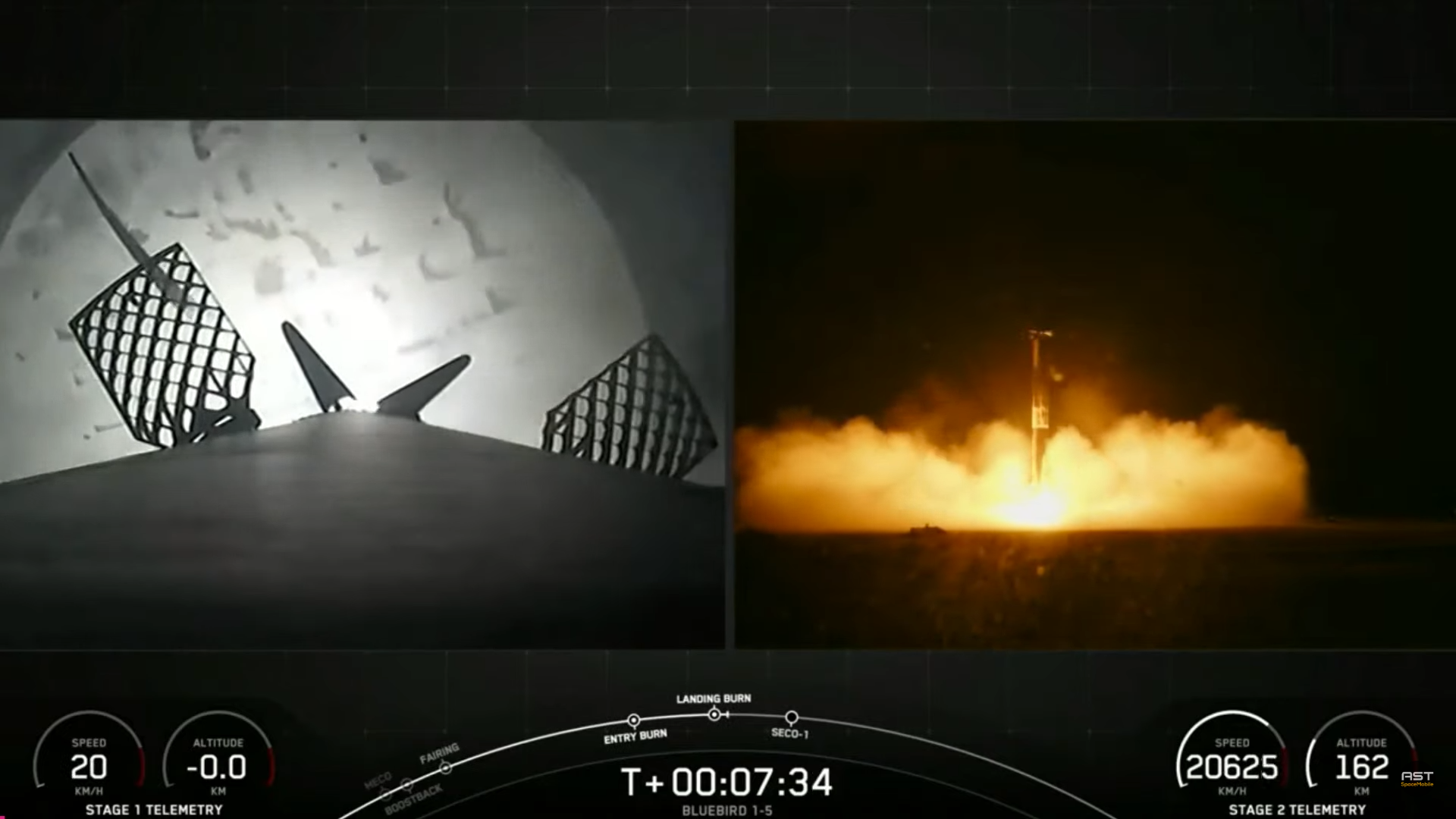AST SpaceMobile's first five commercial satellites have reached orbit.
The huge spacecraft, called BlueBirds, lifted off today (Sept. 12) at 4:52 a.m. EDT (0852 GMT) atop a SpaceX Falcon 9 rocket from Cape Canaveral Space Force Station in Florida.
The Falcon 9's first stage returned to Earth about 7.5 minutes later, making a vertical touchdown at Cape Canaveral's Landing Zone 1. It was the 13th launch and landing for this particular booster, according to a SpaceX mission description.

The Falcon 9's upper stage carried the BlueBird satellites into low Earth orbit as planned and successfully deployed them over a 14-minute stretch beginning about 54 minutes after liftoff.
Each BlueBird sports a communications antenna that covers 693 square feet (64 square meters) when unfolded — the largest such array ever deployed by a commercial spacecraft.

The five 3,300-pound (1,500 kilograms) BlueBirds tie that record, actually. It was set by AST SpaceMobile's BlueWalker 3, a prototype that launched to orbit aboard a Falcon 9 in September 2022. But the BlueBirds are operational satellites, the founding members of a commercial constellation designed to beam service directly to cell phones.
Get the Space.com Newsletter
Breaking space news, the latest updates on rocket launches, skywatching events and more!

"This is a pivotal moment for AST SpaceMobile as we bring our vision to enhance cellular connectivity globally, with the support of our strategic partners and the unwavering commitment of our team," Abel Avellan, the founder, chairman and CEO of the Texas-based company, said in a a prelaunch statement.
AST SpaceMobile's constellation could eventually include 168 satellites. And some of them will be considerably bigger than the BlueBirds that went up today. Indeed, the company has already started production on 17 "Block 2" BlueBird satellites, which will feature 2,400-square-foot (223 square meters) communications arrays, according to SpaceNews.
"We're just getting started," Avellan said during a livestream of the AST SpaceMobile launch of the newer BlueBird design. "Our next generation of satellites will be three and a half times larger."
Such news doubtless makes many astronomers and dark-sky advocates nervous. BlueWalker 3 is one of the brightest objects in the night sky, after all; one astrophysicist described its launch as "a big shift in the constellation satellite issue" that "should give us all reason to pause."

Interestingly, SpaceX and AST SpaceMobile are competitors in the satellite-internet space; Elon Musk's company has built a giant and ever-growing broadband network in LEO called Starlink.
SpaceX has launched 7,001 Starlink satellites to date, more than 100 of them capable of beaming serving directly to smart phones.
Join our Space Forums to keep talking space on the latest missions, night sky and more! And if you have a news tip, correction or comment, let us know at: community@space.com.

Michael Wall is a Senior Space Writer with Space.com and joined the team in 2010. He primarily covers exoplanets, spaceflight and military space, but has been known to dabble in the space art beat. His book about the search for alien life, "Out There," was published on Nov. 13, 2018. Before becoming a science writer, Michael worked as a herpetologist and wildlife biologist. He has a Ph.D. in evolutionary biology from the University of Sydney, Australia, a bachelor's degree from the University of Arizona, and a graduate certificate in science writing from the University of California, Santa Cruz. To find out what his latest project is, you can follow Michael on Twitter.








